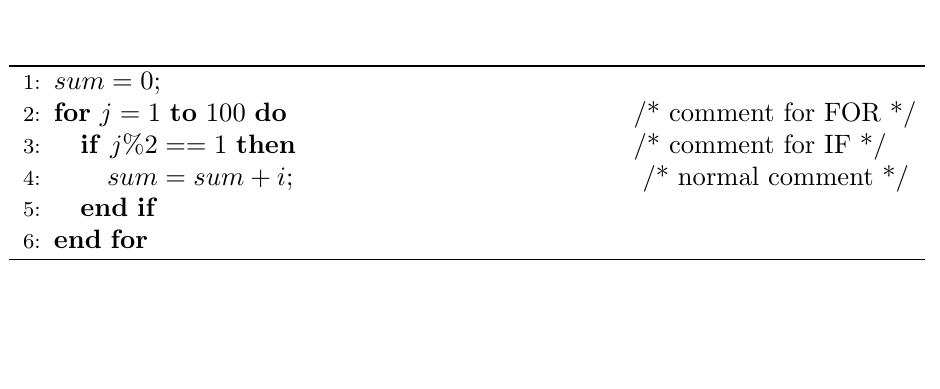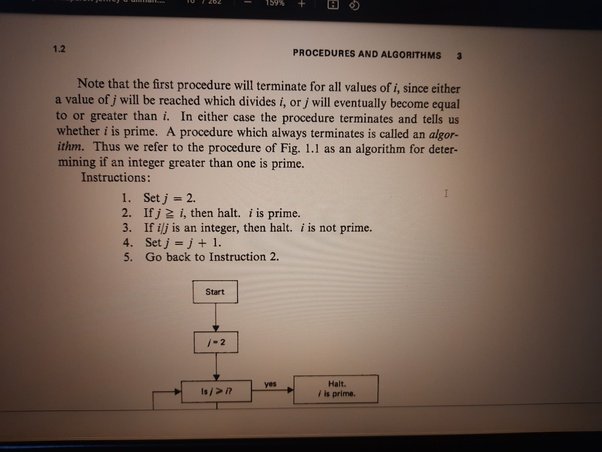TeXstudio has the Ctrl+T/U shortcuts for commenting/uncommenting multilines.
Comment in pseudocodes (Just for use with package algorithmic. For algorithmicx, simply use Comment{})
documentclass{article}
usepackage{algorithm,algorithmic}
usepackage{eqparbox}
%
enewcommand{algorithmiccomment}[1]{hfilleqparbox{COMMENT}{# #1}}
enewcommand{algorithmiccomment}[1]{hfilleqparbox{COMMENT}{/* #1 */}}
egin{document}
egin{algorithm}
egin{algorithmic}[1]
STATE $sum=0$;
FOR[comment for FOR]{$j=1$ TO $100$}
IF[comment for IF]{$j\%2==1$}
STATE $sum=sum+i$; COMMENT{normal comment}
ENDIF
ENDFOR
end{algorithmic}
end{algorithm}
end{document}

LaTex algorithm Packages (ACK:https://tex.stackexchange.com/questions/229355/algorithm-algorithmic-algorithmicx-algorithm2e-algpseudocode-confused)
- algorithm - float wrapper for algorithms.
- algorithmic - first algorithm typesetting environment.
- algorithmicx - second algorithm typesetting environment.
- algpseudocode - layout for
algorithmicx. - algorithm2e - third algorithm typesetting environment.
I use algorithmicx with algpseudocode since they are superior to algorithmic. I think algorithmicx offers the same functionality compared to algorithm2e, but I find its syntax clearer than the one provided by algorithm2e.
Algorithm vs. Procedure (Ack https://qr.ae/pGOhuN)
A procedure which always terminates is called an algorithm.


The notion of a procedure and an algorithm is formally defined in the book “ Formal Languages and their relation to Automata “ (1969), by hopcroft and ullman. https://savedparadigms.files.wordpress.com/2014/09/formal-languages-and-their-relation-to-automata-john-e-hopcroft-jeffrey-d-ullman.pdf